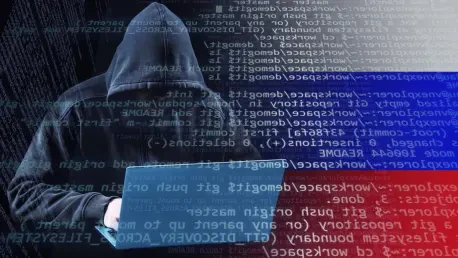Russian cyber activities are now casting a wide shadow of concern across Europe, drawing the attention of cybersecurity experts and policymakers alike. The sophistication and frequency of these cyberattacks have posed significant challenges to the digital infrastructure of various European nations. The purpose of this roundup is to shed light on these developments by gathering insights from different sources regarding the dynamics of Russian cyber threats, their impact, and effective countermeasures.
Evolution and Strategic Importance of Russian Cyber Threats
Russian cyber activities have evolved significantly over the past years, leading to increased intensity and technical complexity. Cybersecurity analysts recognize the historical backdrop of persistent cyber warfare tactics deployed by Russian-aligned APT groups, notably Fancy Bear and Sandworm. In the context of a digital era, understanding these threats has become more crucial than ever, especially given the integration of cyber operations in geopolitical strategy. Recognizing these activities enables nations to prepare more robust defenses against the sophisticated cyber warfare landscape.
Sophisticated Tactics of Russian APT Groups
The technical prowess behind Russian cyber threats is often attributed to their advanced persistent threat (APT) operations. Gamaredon, Fancy Bear, and Sandworm have reportedly intensified their attacks between 2024 and 2025. These groups use tactics like zero-day exploits and destructive malware, pushing the boundaries of cyber-intrusion methods. Insights from industry analysts depict a scenario where defenses are consistently tested, revealing both successes and crucial areas for improvement in cybersecurity practices. Despite advancements in defense technologies, experts debate the effectiveness and adaptability of these measures against the evolving Russian tactics.
European Vulnerabilities and Strategies in Response
Russian cyber threats have notably impacted European critical infrastructure and government sectors, with Ukraine being a prime example of their reach and effectiveness. Various case studies outline severe disruptions caused by these intrusions, pressing the need for advanced security measures. These attacks have also spurred industry shifts and technological innovations as nations seek to bolster their defensive mechanisms. Furthermore, there are diplomatic and economic implications to consider, as strategic vulnerabilities highlighted by these cyber threats influence national and international policies across Europe.
Innovative Approaches to Cyber Defense
Confronting the rise of Russian cyber threats has catalyzed various innovative approaches within the cybersecurity domain. Trends such as AI-driven analytics and real-time threat monitoring appear to be at the forefront of current defense strategies. Analysts have discussed region-specific approaches, considering Europe’s unique geopolitical context and digital landscape. Comprehensive preparedness involves questioning conventional cybersecurity paradigms, fostering an environment where new strategies can be tested and validated for maximum efficacy in safeguarding digital assets.
Broader Cybersecurity Implications
The impact of Russian cyber activities extends far beyond Europe, as global cybersecurity landscapes are interconnected. Geopolitical experts have examined the potential spillover effects and resulting international tensions. Comparative strategies and best practices from international collaborations shed light on potential pathways for improving cybersecurity frameworks. Future scenarios are often speculated upon by experts, encouraging diverse strategic planning to anticipate shifts and new challenges in cyber defense landscapes.
Recommendations for Mitigation and Future Strategies
Experts have pointed toward a variety of actionable strategies as countries seek to mitigate the advanced threats posed by Russian cyber actors. Urgent priorities include reinforcing national cybersecurity infrastructures and advocating for international cooperation. Recommendations focus on proactive threat intelligence sharing, investment in cybersecurity education, and adopting resilient technologies. Governments and organizations can benefit from these practical strategies, implementing them effectively to counter current and future cyber challenges.
Reflection on the Path Forward
As the nature of cyber threats remains complex and dynamic, ongoing vigilance and innovation are essential in defending against them. The potential ramifications of Russian cyber activities on global security have underscored the need for continuous progress in cybersecurity strategies. Looking back, the insights gathered offer a call to action, emphasizing the importance of international unity and cooperation in developing resilient cybersecurity solutions that keep pace with an ever-evolving threat landscape.









